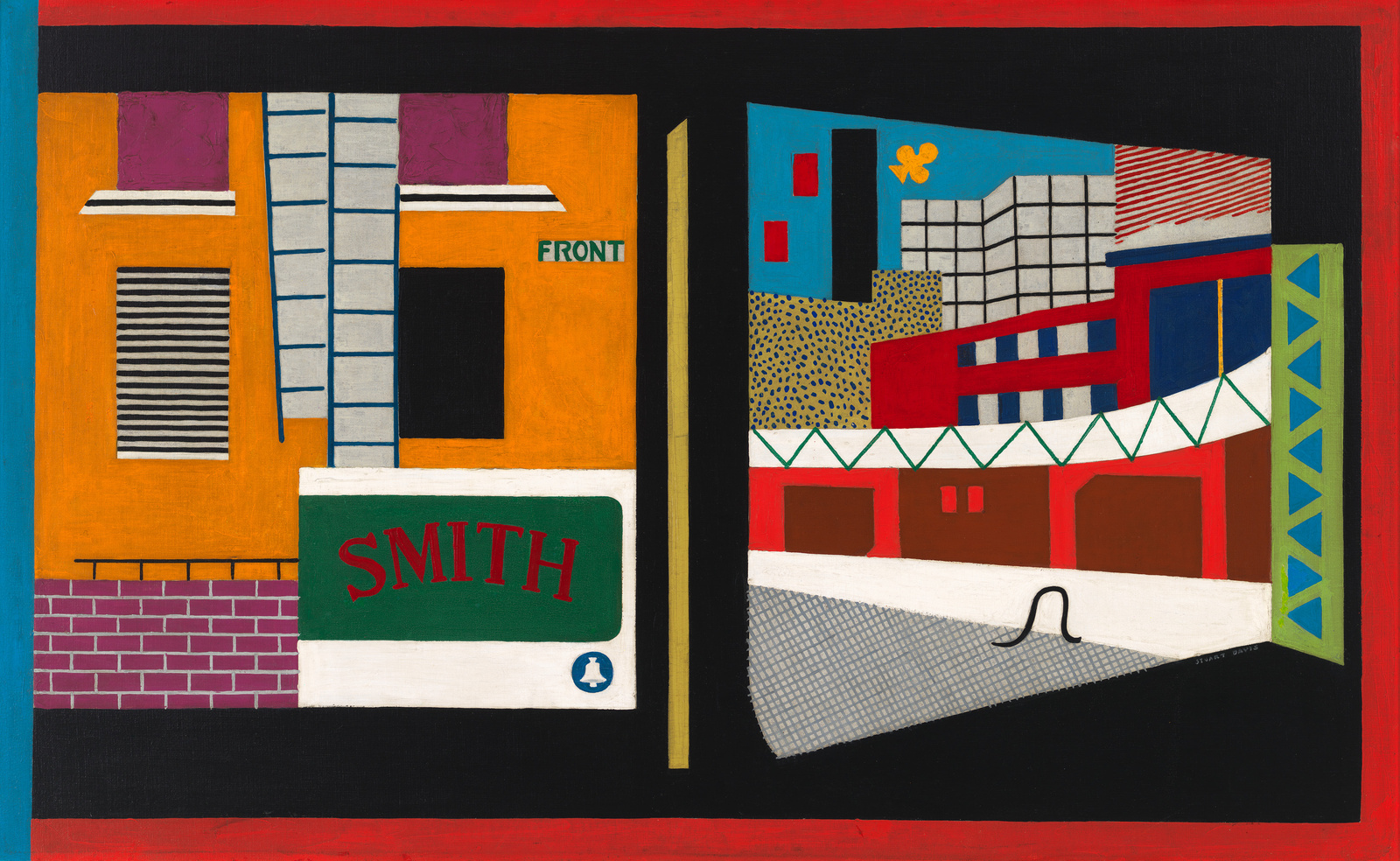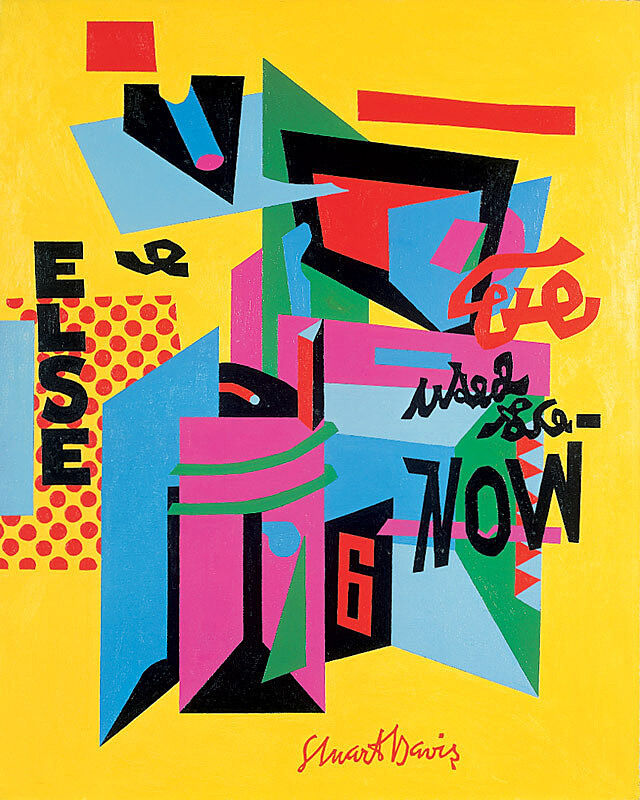Stuart Davis, House and Street, 1931
June 10, 2016
0:00
Stuart Davis, House and Street, 1931
0:00
Narrator: Stuart Davis split this painting of lower Manhattan right down the middle. Why do you think he might have done that?
Let’s start with the left-hand frame. What kinds of lines do you notice? The ladders of the fire escape are a little skewed, but mostly Davis has given us straight horizontals and verticals—so the whole thing is pretty flat and two-dimensional. Everything is just right there on the surface.
What’s different on the right? For one thing, there are a lot more curves and diagonals. These lines create a feeling of movement. Take a look at the form that arcs across the center of the composition. When Davis painted House and Street, everyone would have recognized it as an elevated train—like the High Line near the Whitney.
Put together, the images give us two ways of taking in the energy of the modern city. On the left, Davis gives us a busy scene in a single glance. On the right, he paints a city that’s full of action, motion, and change—even when there are no people in the picture.
In Stuart Davis: In Full Swing (Kids).



